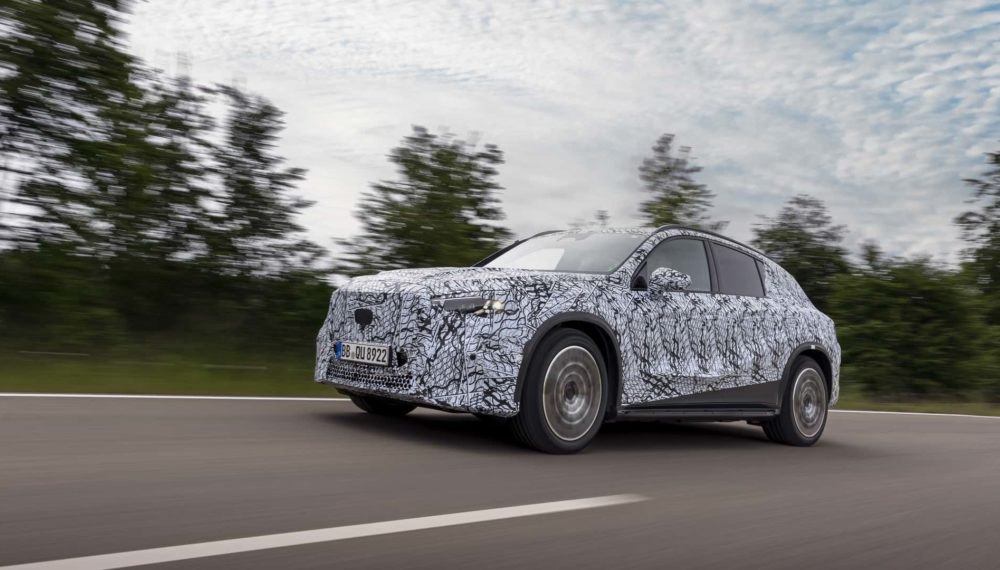Mercedes-Benz utilises PEMFC fuel cells (Polymer Electrolyte Membrane Fuel Cell) for the F‑CELL vehicles. An assessment of various fuel cell designs showed them to be the best option for motor vehicles. The key advantage when it comes to vehicle drive systems is their operating temperature of up to around 80 degrees Celsius.
A fuel cell is a voltaic cell that converts the reaction energy of an added fuel (e.g. hydrogen) and an oxidising agent (e.g. airborne oxygen) into electrical energy. A fuel cell is not an energy storage device like a rechargeable battery, but an energy converter.
The drive system on a fuel cell vehicle is twice as efficient as a vehicle with a combustion engine, essentially the result of converting the fuel’s (hydrogen) chemical energy directly into electrical energy. At the heart of the PEM fuel cell is the proton exchange membrane (PEM), a plastic film that conducts protons, and which separates the reaction agents: oxygen and hydrogen. The plastic film measuring just a few tenths of a millimetre is coated with a thin layer of platinum on both sides. This platinum layer acts as a catalyst for the chemical reaction that breaks down the hydrogen into protons and electrons. While the protons flow through the membrane to the oxygen, the electrons are prevented from getting through. The hydrogen reacts with the oxygen to create water, which is dissipated into the atmosphere. The excess electrons on the hydrogen side and the lack of electrons on the oxygen side induce an electrical voltage. If the two poles are connected, an electric current flows, which drives the electric motor in the F‑CELL vehicle. Apart from electrical energy, the reaction in the fuel cell also generates heat that can be used to heat the vehicle, for instance.
To achieve sufficient electrical power for fuel cell vehicles, individual fuel cells are electrically connected in series to create stacks. A control unit ensures the stack is supplied with the right amounts of hydrogen, and oxygen from the air. The hydrogen is fed into the stack via the anode module, while the air is added via the cathode module. A humidifier module keeps the stack moist to achieve optimum operating conditions within the stack. A cooling system always maintains the fuel cell at its optimum operating temperature of around 80 degrees Celsius.
System partner for the zero-emission drive system
The Automotive Fuel Cell Cooperation headquartered in Vancouver developed the fuel cell stack for the B‑Class F‑CELL. The company was founded in 2007 with Daimler as the majority shareholder (50.1 percent). Other partners include the Ford Motor Company (30 percent) and Ballard Power Systems (19.9 percent).
NuCellSys GmbH developed the ancillary units to operate the fuel cell stack and integrate the stack into the fuel cell system. The wholly owned subsidiary of Daimler AG is responsible for system engineering and design, component and software development as well as system validation.



















